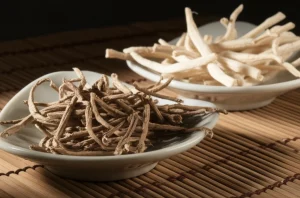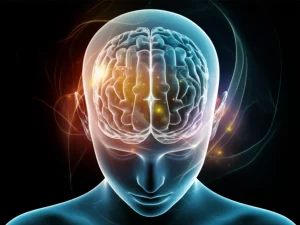Beyond Tummy Troubles: BSS Shows Brain Benefits in Autism Study
Hey there! Let’s chat about something pretty fascinating bubbling up in the world of science. We’re diving into a study that looked at a compound you might actually have in your medicine cabinet right now – Bismuth Subsalicylate (BSS). Yep, the stuff often found in remedies for upset stomachs. But guess what? Scientists are exploring its potential far beyond tummy troubles, specifically in the context of autism spectrum disorder (ASD).
Now, ASD is a complex neurodevelopmental condition, and while we’re learning more every day, its exact causes are still a big puzzle. However, research is pointing towards a couple of key players that seem to be involved: oxidative stress and neuroinflammation. Think of oxidative stress like rust building up in your brain cells, and neuroinflammation like your brain being constantly a little bit ‘on fire’. These processes can mess with how neurons work, lead to cell loss, and contribute to the behavioral differences seen in ASD.
When the brain is under this kind of stress, certain cells, like activated microglia (they’re like the brain’s immune cells), start releasing inflammatory signals, making things even worse for neurons. It’s a bit of a vicious cycle.
This is where BSS comes into the picture. It’s known for being great at calming inflammation and fighting off that ‘rust’ (oxidative stress). So, the big question this study asked was: Could BSS help dial down the neuroinflammation and oxidative stress in a model that mimics some aspects of autism, and could that actually improve behavior?
Setting Up the Experiment
To figure this out, the researchers used a well-established model involving male Wistar albino rats. They used propionic acid (PPA) to induce an autism-like state in most of the rats. PPA is a compound that, when given to rats, creates many features seen in ASD, including increased oxidative stress, inflammation, and changes in social and cognitive behavior. It’s a reliable way for scientists to study potential treatments.
They split 30 rats into three groups:
- Group 1: The normal control group. They just got saline (basically saltwater).
- Group 2: The PPA group. They got PPA to induce the autism-like state, and then treated with saline. This is our comparison group to see the effects of PPA alone.
- Group 3: The PPA + BSS group. They got PPA and were then treated with BSS. This is the group we’re watching to see if BSS makes a difference.
The PPA was given for 5 days, and then the treatments (saline or BSS) were given for 15 days. After that, it was test time!

Checking Out Behavior
The scientists ran a few different tests to see how the rats were doing behaviorally. These tests are designed to look at things that are often different in the PPA model and in ASD:
- Three-Chamber Sociability Test: This checks how much a rat wants to hang out with another rat versus just an empty cage. It’s a way to measure social interaction. What they saw was pretty striking: the PPA-only group spent way less time with the other rat compared to the control group. But the group that got BSS? Their sociability levels bounced back, almost matching the control group! It suggests BSS helped mitigate those social challenges.
- Open Field Test: This test puts a rat in a big, open box. How much they explore and how much time they spend in the center (which can be scary for anxious rats) gives clues about their exploratory drive and anxiety levels. The PPA-only rats explored much less. The BSS-treated rats, however, showed significantly *more* exploration, suggesting BSS might have helped reduce anxiety and encouraged more typical exploratory behavior.
- Passive Avoidance Learning Test: This is a memory test. Rats naturally prefer dark spaces. In this test, they learn that going into a dark chamber gives them a mild shock. The next day, you see how long they remember *not* to go into the dark side. The PPA-only group forgot quickly, showing impaired learning and memory. But the BSS group? They remembered much better, staying out of the dark chamber for much longer. This points to BSS having a positive effect on cognitive function.
These behavioral results are super encouraging. They suggest that whatever BSS is doing on a biological level is translating into meaningful improvements in behaviors that are relevant to ASD.
Peeking Inside the Brain: Inflammation and Stress
After the behavioral tests, the researchers looked at the rats’ brains to see what was happening biochemically and structurally. And wow, the results lined up nicely with the behavioral findings.
They measured levels of certain molecules in the brain:
- Malondialdehyde (MDA): This is a key marker of oxidative stress (that ‘rust’ we talked about). As expected, MDA levels were sky-high in the PPA-only group. But in the BSS group? They were significantly reduced, showing BSS’s antioxidant power at work.
- Inflammatory Cytokines (TNF-α, IL-6, IL-17, PGE2): These are signaling molecules that drive inflammation. Just like MDA, these were much higher in the PPA-only brains compared to controls. Crucially, BSS treatment significantly brought the levels of these inflammatory markers down. This confirms BSS’s anti-inflammatory effects within the brain.
- Brain-Derived Neurotrophic Factor (BDNF): This is like fertilizer for neurons – it helps them survive, grow, and connect. BDNF levels were lower in the PPA-only group. BSS treatment helped restore BDNF levels, though not completely back to normal. This suggests BSS might also be helping to support neuronal health and plasticity.

Saving Neurons
Beyond the molecules, they also looked at the actual brain tissue, specifically in areas important for memory and coordination: the hippocampus (CA1 and CA3 regions) and the cerebellum.
They checked for:
- Glial Activation (GFAP staining): GFAP is a marker for activated astrocytes, a type of glial cell that becomes active during neuroinflammation. In the PPA-only group, GFAP staining was much higher in the hippocampus and cerebellum, indicating significant glial activation and inflammation. The BSS group showed reduced GFAP staining, meaning less glial activation and inflammation in these key brain areas.
- Neuronal Counts: They counted the number of healthy neurons in these regions. The PPA-only group had significantly fewer neurons in the hippocampus (CA1 and CA3) and fewer Purkinje cells in the cerebellum compared to controls. This shows PPA caused neuronal loss. The BSS group, however, had significantly *more* surviving neurons in these areas compared to the PPA-only group. This is strong evidence that BSS had a neuroprotective effect, helping to preserve neuronal integrity.

Putting It All Together
So, what does all this tell us? This study provides compelling evidence that Bismuth Subsalicylate has significant therapeutic potential in this specific model of autism. It seems to work by tackling those key pathological mechanisms: it acts as a powerful antioxidant, reducing oxidative stress (less ‘rust’), and it’s a potent anti-inflammatory, calming down the ‘fire’ in the brain. By doing this, it helps protect neurons from damage and loss, particularly in crucial areas like the hippocampus and cerebellum.
And the really exciting part? These biological improvements correlated with better behavioral outcomes. The rats treated with BSS showed improvements in social interaction, were more exploratory (less anxious), and had better learning and memory. It’s like calming the storm inside the brain helped the rats function more typically.
Looking Ahead (and the Important Caveats)
Now, before we get too carried away, it’s crucial to remember this was a study in rats using a specific model. While the PPA model is valuable and mimics many aspects of ASD, rats aren’t people, and results don’t always translate directly. Also, this study focused on certain behaviors but didn’t look at repetitive behaviors or sensory sensitivities, which are also core parts of ASD.
The study also points out that while BSS is FDA-approved for other uses (like tummy issues!), its long-term safety and potential for accumulation or neurotoxicity when used for something like ASD would need careful investigation. We also need more research to fully understand the exact molecular pathways BSS is affecting to get these results.
However, this research opens up a really interesting avenue. It suggests that targeting oxidative stress and neuroinflammation could be a promising strategy for managing ASD symptoms, and that a compound like BSS, with its known properties, could be a candidate. Future research will need to explore this further, perhaps looking at different doses, longer treatment periods, and eventually, if the science supports it, exploring potential clinical applications.
It’s a reminder that sometimes the most unexpected remedies might hold clues to complex conditions. Who knew a common over-the-counter ingredient could offer such fascinating insights into brain health?
Source: Springer







